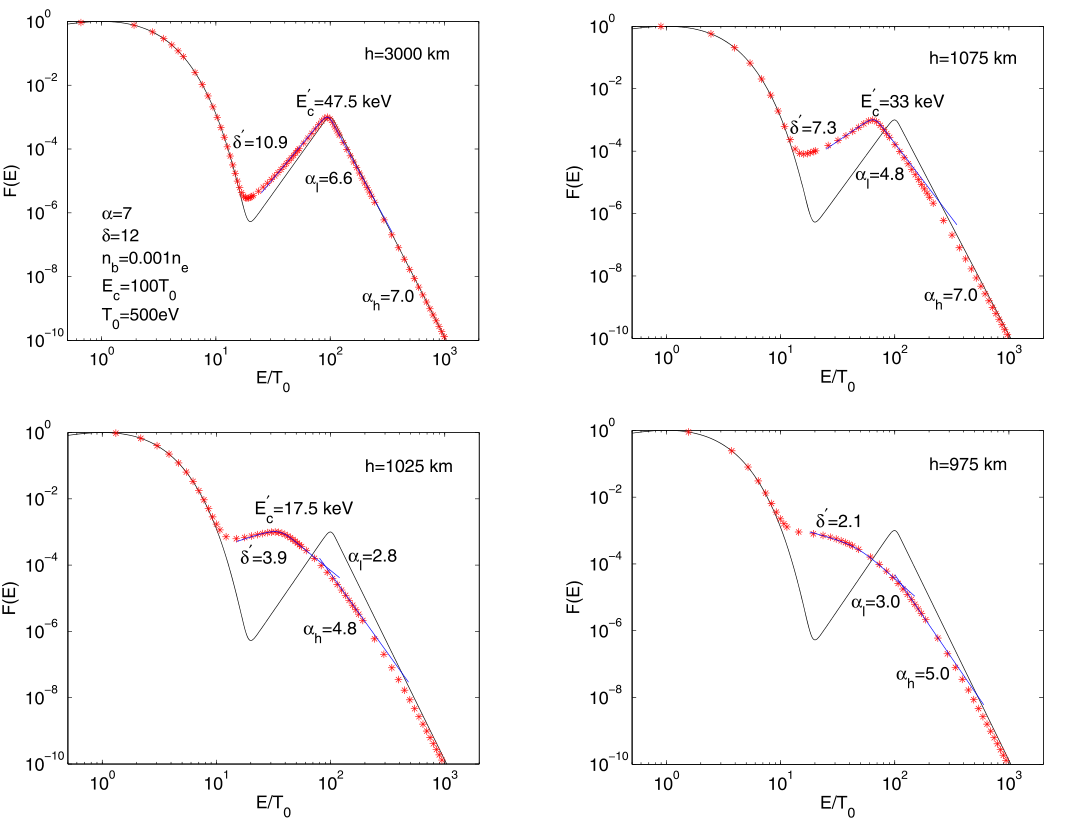During a solar flare event, a tremendous amount of the stored magnetic energy is suddenly released and partly transferred into the accelerated particles. It is well known that solar hard X-ray bursts (HXRs) and solar radio bursts (SRBs) from solar flares both are produced directly by the flare-accelerated electrons traveling through the solar atmosphere. These flare-accelerated electrons form fast electron beams (FEBs) and propagate along with solar magnetic fields through the solar atmosphere. Their energy spectra can considerably vary due to the energy loss and this may significantly influence the observational characteristics of the producing HXRs and SRBs. According to the standard model of the flare HXR emission, the difference between the observed spectral indices of the looptop and footpoint HXR sources  γ=γtp-γft=2 can be expected. However, from the majority of observations of HXRs, one has often
γ=γtp-γft=2 can be expected. However, from the majority of observations of HXRs, one has often  γ≠2 . Moreover, the observations also reveal that the photon spectra of HXRs usually have a double power-law spectrum. These observations indicate that energy loss must be considered in the study of spectrum evolution of FEBs.
γ≠2 . Moreover, the observations also reveal that the photon spectra of HXRs usually have a double power-law spectrum. These observations indicate that energy loss must be considered in the study of spectrum evolution of FEBs.
In this paper, based on flare atmospheric models, we investigate the parametric evolution of power-law spectra of FEBs due to their energy losses when propagating along flaring loops. There are two types of energy loss process, the collisional energy loss by collisions with charged particle and neutral particle, and the noncollisional energy loss due to the induced electric field have been considered.
The results show that energy loss has an important impact on the parametric evolution of FEBs. The steepness cutoff behavior will be flatten and turn into the saturation cutoff behavior, and the initially single power-law spectrum with a lower-energy cutoff can evolve into a more complex double power-law spectrum or a broken power-law spectrum with multi-breaking knees because of the dependence of the energy loss on the initial energies (Figure 1). The possible effects of the energy-spectral evolution of FEBs on observational characteristics of their HXR flares and SRBs are discussed. The present results are helpful to understand the physics of dynamical spectra of HXRs and SRBs from solar flares.

Figure 1. The evolution of the FEBs due to energy loss when they precipitate along the loop reach height h=3000 km, 1075 km, 1025 km, and 975 km, respectively. Here, the cutoff energy Ec , steepness index δ, and spectral index α of the initial FEBs are 50 keV, 12 and 7. Ambient plasma temperature T0 =500 eV.
Contact: TANG Jianfei
Xinjiang Astronomical Observatory, Chinese Academy of Sciences
Email: jftang@xao.ac.cn
Article link: https://doi.org/10.3847/1538-4357/abc2ca